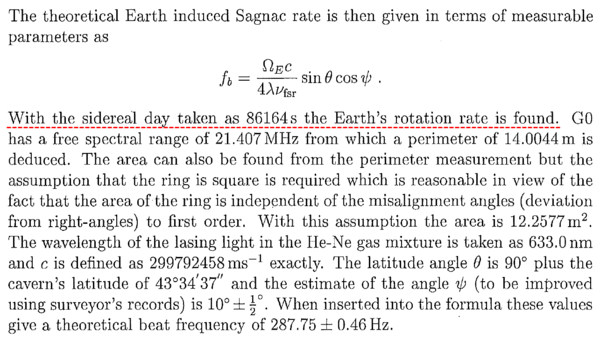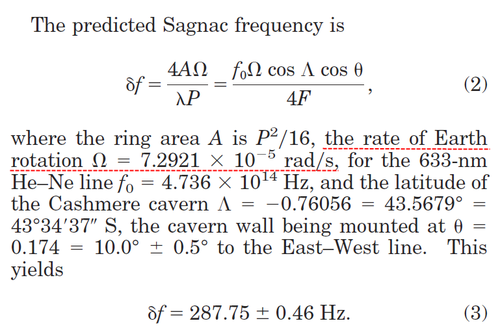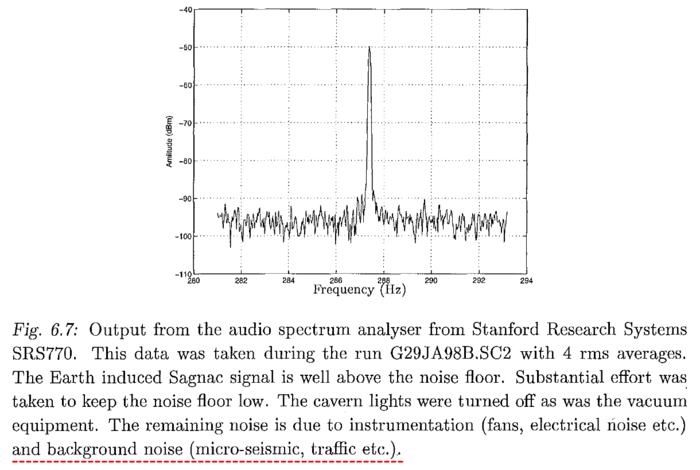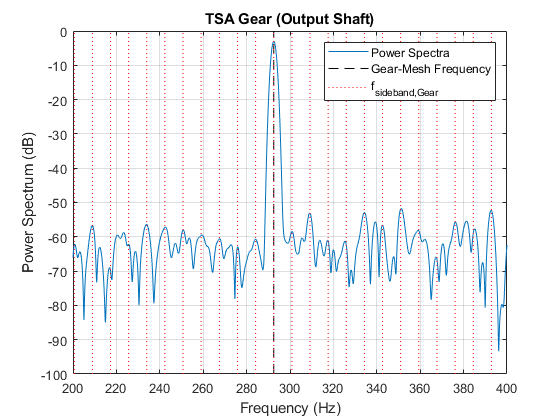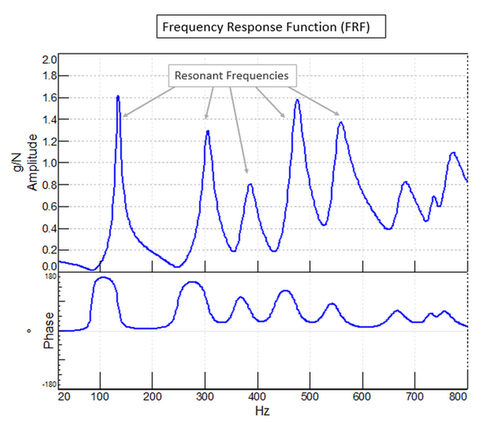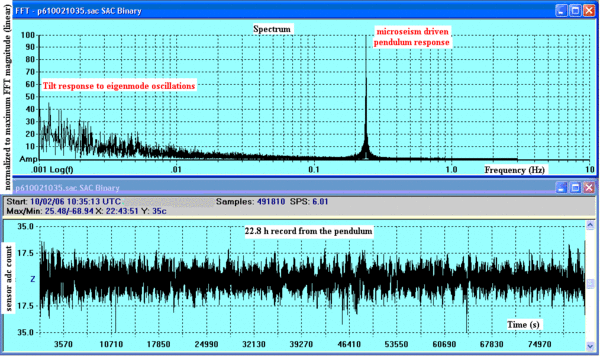Difference between revisions of "Ring Laser Gyroscope - Seismology"
Tom Bishop (talk | contribs) |
Tom Bishop (talk | contribs) |
||
| Line 5: | Line 5: | ||
Researchers have published information pertaining to the detection of microseismic noises and resonances due to the assumed rotation of the earth, and from this it appears that some have erroneously misinterpreted these works as a direct observation of 15 degrees per hour beneath the device. Regardless of the popular assumption of directly observed earth rotation, assessing such works in their entirety, directly form the source creators, suggests that no such claim is made at all. Further, we find that Copernican proponents of the earth's rotation ''believe'' how the device operates in detection of the earth's rotation, but seem to have difficulty with ''demonstrating'' that idea using the source research itself. | Researchers have published information pertaining to the detection of microseismic noises and resonances due to the assumed rotation of the earth, and from this it appears that some have erroneously misinterpreted these works as a direct observation of 15 degrees per hour beneath the device. Regardless of the popular assumption of directly observed earth rotation, assessing such works in their entirety, directly form the source creators, suggests that no such claim is made at all. Further, we find that Copernican proponents of the earth's rotation ''believe'' how the device operates in detection of the earth's rotation, but seem to have difficulty with ''demonstrating'' that idea using the source research itself. | ||
| − | ==Ring Laser Gyroscopes are Seismometers== | + | ==Research Ring Laser Gyroscopes are Seismometers== |
Very sensitive Ring Laser Gyroscopes are often used for research purposes in the study of seismometry. Some research gyroscopes are attached to underground cave walls and cannot be rotated at all. A search of Google Scholar brings up many papers on the matter. From the first three title results of the [https://scholar.google.com/scholar?hl=en&as_sdt=0%2C5&q=%22ring+laser+gyroscope%22%2B%22seismic%22&btnG= search term "ring laser gyroscope"+"seismic"] we see: | Very sensitive Ring Laser Gyroscopes are often used for research purposes in the study of seismometry. Some research gyroscopes are attached to underground cave walls and cannot be rotated at all. A search of Google Scholar brings up many papers on the matter. From the first three title results of the [https://scholar.google.com/scholar?hl=en&as_sdt=0%2C5&q=%22ring+laser+gyroscope%22%2B%22seismic%22&btnG= search term "ring laser gyroscope"+"seismic"] we see: | ||
Revision as of 00:06, 21 October 2021
The Ring Laser Gyroscope is a type of gyroscope that is based on laser beams which move around a cavity. The principle of operation of a RLG is based on the Sagnac Effect, which was famed for showing that light changes velocity on a rotating platform. The changing velocity of light as seen in the Ring Laser Gyroscope and Sagnac Experiments is said to be contrary to the consistency of light as proposed by Special Relativity (See the Michelson-Morley Experiment and Sagnac Experiment).
Some have alleged that Ring Laser Gyroscopes have detected the rotation of the earth. When assessing these claims, it is found that modern Ring Laser Gyroscopes are very sensitive devices which are often double-purposed as seismometers.[1] Researchers have used these sensitive devices to detect patterns in the background microseismic noise, where certain features are interpreted to be caused by the earth's rotation. The feature of the background noise assumed to be an effect of the earth's rotation is called the "Earth line," and is admitted to be of unknown origin and cause.[2]
Researchers have published information pertaining to the detection of microseismic noises and resonances due to the assumed rotation of the earth, and from this it appears that some have erroneously misinterpreted these works as a direct observation of 15 degrees per hour beneath the device. Regardless of the popular assumption of directly observed earth rotation, assessing such works in their entirety, directly form the source creators, suggests that no such claim is made at all. Further, we find that Copernican proponents of the earth's rotation believe how the device operates in detection of the earth's rotation, but seem to have difficulty with demonstrating that idea using the source research itself.
Research Ring Laser Gyroscopes are Seismometers
Very sensitive Ring Laser Gyroscopes are often used for research purposes in the study of seismometry. Some research gyroscopes are attached to underground cave walls and cannot be rotated at all. A search of Google Scholar brings up many papers on the matter. From the first three title results of the search term "ring laser gyroscope"+"seismic" we see:
- "Ring laser gyroscopes as rotation sensors for seismic wave studies"
- "Ring laser detection of rotations from teleseismic waves"
- "Sideband analysis and seismic detection in a large ring laser"
It is seen that Ring Laser Gyroscopes are used in seismic studies. It is from such studies that the rotation of the earth appears, manifested as the "Earth line," as well as the seismic components near the Earth line which are concluded to be rotational due to appearing near it.[1] The popular misconceptions of the Ring Laser Gyroscope directly observing the rotation of the earth originate from these studies of noise and resonance which sometime speak of seeing the earth's rotation.
GINGERrino
The GINGERino is an often discussed device which comes up in searches for ring laser observations of the Earth's rotation. It is a large underground ring laser device used for research. Descriptions of this device tell that its purpose is to detects "underground rotational seismic disturbances" -
https://iopscience.iop.org/article/10.1088/1742-6596/1342/1/012084/pdf
“ GINGERINO is shown in Fig. 2 . It is located inside the deep underground INFN laboratory of the Gran Sasso (LNGS) [7]; its aim was to characterise the underground rotational seismic disturbances.. ”
GINGERINO is a "rotational seismic observetory":
“ GINGERino is now operating, along with seismic equipment provided by the Italian Institute of Geophysics and Volcanology, as a rotational seismic observatory. ”
The device functions as a specialty horizontal seismograph which observes the rotation of seismic waves, with the assumption that it is the Earth's rotation which causes the rotation observed.
https://physicsworld.com/a/ring-laser-reveals-subtle-seismic-motion/
“ Seismic shift: GINGERino is deep below these mountains
A laser gyroscope located deep beneath the Gran Sasso mountain in central Italy has made the first deep-underground measurements of the rotational motion that passing seismic waves generate in the Earth’s crust. The ability to make such measurements could boost our understanding of the strain that rocks undergo before an earthquake takes place, say the scientists who carried out the research.
Earthquakes release large amounts of pent-up energy in the form of seismic waves, which propagate in all directions from the quake’s epicentre. When those waves reach the Earth’s surface they can cause the ground to move along one or more orthogonal axes – up and down, back and forth, and side to side. But seismic waves can also generate much smaller rotational motions, in which the ground rotates around one or more of the three axes.
According to Gilberto Saccorotti of Italy’s National Institute for Geophysics and Volcanology (INGV), rotational motion is important to measure for a number of reasons. For one thing, seismologists can determine the speed of a seismic wave – and so better understand the kind of rock it propagates through – by comparing the magnitudes of the rotational and translational motions that it generates. In addition, better measurements of ground rotation during strong earthquakes would allow for more robust building regulations. “Circular motion, like horizontal motion, can be very dangerous,” he says. “Structures haven’t been designed with that in mind but are instead meant to resist vertical forces, i.e. their own weight.”
Frequency shift
Ring-laser gyroscopes, on the other hand, are designed specifically to measure rotational motion. These devices record the very tiny differences in frequency between two laser beams sent in opposites directions around an optical circuit that is fixed rigidly to the ground. The frequency offset reflects the rate at which the ground rotates. Ring lasers in Germany, New Zealand and the US have been detecting earthquakes’ rotational ground movements for about the last two decades, but the fact that these instruments are located at or just below ground level exposes them to disturbances – be they of natural or human origin – that originate close to the Earth’s surface.
In the latest work, Saccorotti and colleagues at the INGV and Italy’s National Institute for Nuclear Physics (INFN) used a ring laser called GINGERino, consisting of four 3.6 m-long sides mounted on a block of granite. Housed 1400 m underground at the Gran Sasso National Laboratory, the device is largely shielded from the tiny variations in air pressure that can trouble ring lasers at shallower depths. It is the forerunner of an experiment called Gyroscopes in General Relativity (GINGER), which will use at least three large ring lasers arranged at right angles to one another to try and measure the very subtle “frame-dragging” effect predicted by Einstein’s general theory of relativity.
Using GINGERino, the INFN-INGV group was able to record a magnitude-seven earthquake that occurred under the Atlantic Ocean during a week of data-taking in June 2015. The researchers say that although their data exhibit a poor signal-to-noise-ratio, they were still able to detect rotational motion generated by the earthquake’s seismic waves in the rock surrounding the lab.
Potential earthquake precursors
According to Saccorotti, the result shows the feasibility of installing a long-term experiment in the Gran Sasso lab – be it GINGER or a single, larger ring laser. Such a device would systematically record rotational ground motions over a two- to four-year period. This would allow the detailed study of the elastic deformation of rock caused by the gradual build-up of energy across a geological fault ahead of an earthquake. “That deformation can include rotational motion, so having a very sensitive device in a low-noise environment opens up interesting possibilities for studying a potential earthquake precursor”, he says, pointing out that Gran Sasso is in one of the most seismically active regions of Italy.
Ulrich Schreiber of the Technical University of Munich, who collaborates with the Italian group, points out that the field of “rotational seismology” is now quite well established, thanks to the availability of improved ring-laser gyroscopes. But he nevertheless praises the latest work. “GINGERino is a prototype instrument that has still to mature a fair bit before reaching its full potential,” he says. “But being able to observe rotational motion from remote earthquakes in a deep-underground laboratory is an important step forward.” ”
Foucault Pendulum Analogy
Indeed, other sources tell us that the seismic waves rotate. When we observe rotating seismic waves the situation is much like when observing a Foucault Pendulum. The observer observes his or herself as stationary, while the Foucault Pendulum moves around its pit, allegedly caused by the rotation of the Earth.
https://inside.mines.edu/~rsnieder/Snieder16Fouc.pdf
“ Earth’s rotation leads to a slow rotation of the transverse polarization of S waves; during the propagation of S waves the particle motion behaves just like a Foucault pendulum. ”
The Earth Line
Strapdown Inertial Navigation Technology
By David Titterton, John L. Weston, John Weston
From Chapter 15.6 (Archive) on p.497, which discusses the large laser ring gyroscope at the University of Canterbury, we see that the rotation of the earth is seen with "the Earth line":
“ The Fourier transform of the output from the laser cavity gives a spectral line associated with the rotation of the Earth often termed 'the Earth line'. Analysis of this spectral line is used to monitor the impact of seismic waves and other events. This ability to make high-precision measurements of rotation rates has led to applications in geodesy. ”
Analysis of the Earth line is used to monitor seismic events. On p.498 we read that the Earth line is around the 0.2-1Hz region:
“ The effect of seismic events is to induce frequency-modulated side bands, in the 0.2-1 Hz region, around the 'Earth line', which indicate the presence of rotational components associated with seismic events. ”
We also read that seismic events around that region is assumed to indicate the presence of rotational components associated with seismic events. The researcher and others are making the conclusion that seismic events near the line must be rotational components because they are near the earth line that is assumed to be related to the rotation of the earth.
Oscillation in the Gain Medium
In Ring Laser Dynamics (Archive) by B Tom King it is admitted that the nature of the 'Earth line' is unknown and unverified. From p.152 we read:
“ While lasing in single longitudinal mode and unlocked under the Earth's rotation a Lissajous figure is generated on an oscilloscope with the Sagnac signal from G0 on the x-axis and a sinusoid (from a signal generator) on the y-axis. The figure can be made stationary by varying the frequency of the generated signal. Once achieved this becomes an extremely sensitive detector of phase shifts in the G0 output. A variety of tests can then be performed. Artificial seismic events are easily detected as a jitter in the Lissajous figure. Also the introduction of a magnetic field near the gain medium has the effect of shifting the beat frequency and hence causes the Lissajous figure to rotate at a constant rate. However, the question remains as to whether or not this signal is necessarily the Earth induced line. It is difficult to impose a rotation on the laser as it is rigidly mounted to a solid concrete wall which in turn is moulded around the solid volcanic rock that forms the interior cavern wall. It is conceivable that the signal can be traced back to some oscillation in the gain medium. This problem is yet to be clarified. ”
We are told that the nature of the Earth line is unknown and that the signal may be traced back to some oscillation in the gain medium. The reader should ponder how it could be possible for an observed rotation rate of 15 degrees per hour beneath a device could really be an "oscillation in the gain medium."
This statement appears to affirm that that the matter is actually a measurement of anthropogenic and microseismic noises, and not a direct measurement of rotation beneath the device as some have alleged. The researchers in such papers do not appear to be asserting that claim themselves.
Calculation Agreement
The author of the above paper goes on to deduce that because the earth induced line agrees with an equation, it is assumed that the rate is indeed from the earth.
“ However, it is assumed that the signal is indeed the Earth induced rate mostly because of the excellent agreement between the measured output frequency (see Figs. 6. 7 and 6.8) and the expected frequency of 287. 75 ± 0.46 Hz. ”
"Excellent agreement" with an equation which was likely made to match observation, after the fact, and after the invention of the device.
On p.152, where the paper discusses the theory of the equations, it is shown that the rotation rate of the earth involves the length of day, a period of 86164s, is applied as an input into the interpretation. The process is using a predefined period to assess a daily variation or feature of the noise to get a "rotation rate". This would be opposed to a process of finding the rotation rate from the raw data.
The "rotation rate of the earth" is found when one uses a period of 86164 seconds as the Sidereal Day.
It should be further noted that the 'Sidereal Day' happens to be the general time it takes for the stars to return to their spots above the earth, and which also exists in Flat Earth Theory.
Applied Optics
On p.2520 of paper titled Design and Operation of a Very Large Ring Laser Gyroscope from Vol.38, No.12 of Applied Optics we find another equation which predicts the frequency of 287. 75 ± 0.46 Hz.
We see that in this equation that the earth's rotation is an input variable into the equation, not an output variable.
Under the Flat Earth Theory the Sidereal Day is the general time it takes for celestial bodies to return to their positions over the earth. The Latitude is the distance from the poles or from the equator. These input values which are used to estimate a frequency are not Round Earth specific and are elements which also exist in FET.
Although the results of only one location is given, using such elements to create a prediction may indeed be possible.
Resonant Frequency
From the Ring Laser Dynamics (Archive) paper we find an illustration of the Earth Line on p.153:
Compare the above to a diagram and units used to depict the resonant frequency of rotating gears:
Vibration Analysis of Rotating Machinery (Archive)
MathWorks example
Visualize the Power Spectra for Time-Synchronous Averaged Signals
“ Calculate the power spectrum of the time-synchronous averaged gear signal. Specify a frequency range that covers 15 gear sidebands on either side of the gear mesh frequency of 292.5 Hz. Notice the peaks at fsideband,Gear ”
The detector device in the above example is not spinning around on the outer edges of the gears, but is listening to the vibrations. It is listening to something oscillate.
Frequency Response Function
See also the Frequency Response Function (Archive):
“ What is a Frequency Response Function (FRF)?
A Frequency Response Function (or FRF), in experimental modal analysis:
- is a frequency based measurement function
- used to identify the resonant frequencies, damping and mode shapes of a physical structure
- sometimes referred to a “transfer function” between the input and output
- expresses the frequency domain relationship between an input (x) and output (y) of a linear, time-invariant system ”
“ Bode Plot of Amplitude and Phase of a FRF function. Amplitude has peaks corresponding to natural frequencies/resonances of test object. Phase has shift at resonant frequency. ”
Seismic 0.2-1 Hz Region
From the paper Ring Laser Dynamics (Archive) we had seen the following quote about the Earth line:
“ The effect of seismic events is to induce frequency-modulated side bands, in the 0.2-1 Hz region, around the 'Earth line', which indicate the presence of rotational components associated with seismic events. ”
Seismometer devices which are not Ring Laser Gyroscopes also see a prominent peak at the 0.2-1 Hz region. Look at Fig. 5 from a compound pendulum which functions as a horizontal seismometer/tiltmeter (Archive):
The author calls the noise in the background microseisms and earth hum:
“ Shown in Fig. 5 is a record that was collected for an interval approaching 24 h. The spectrum has been scaled relative to the maximum component observed during this time (microseisms), and plotted on a linear rather than logarithmic scale. The linear scale shows more clearly the mHz structure associated with the pendulum's response to persistent eigenmode oscillations (earth hum). Based on data collected with other of the author's different instruments during hurricanes, the spectrum below 10 mHz is expected to become distinctly different and highly variable during powerful storms. ”
Then, from the Wikipedia page on Seismic Noise we find:
https://en.wikipedia.org/wiki/Seismic_noise (Archive)
Causes
“ Research on the origin of seismic noise[1] indicates that the low frequency part of the spectrum (below 1 Hz) is due to natural causes, chiefly ocean waves. In particular the peak between 0.1 and 0.3 Hz is clearly associated with the interaction of water waves of nearly equal frequencies but opposite directions.[2][3][4][5] At high frequency (above 1 Hz), seismic noise is mainly produced by human activities such as road traffic and industrial work; but there are also natural sources, like rivers. Around 1 Hz, wind and other atmospheric phenomena are also a major source of ground vibrations.[6] ”
This page seems to say that the peak in seismometers between 0.1 and 0.3 Hz is caused by the ocean.
Fluctuating Earth Rotation Rate
Curiously, the 'rotation rate' of the earth can fluctuate over time. From p.2 of High-Accuracy Ring Laser Gyroscopes: Earth Rotation Rate and Relativistic Effects (Archive) we see:
Notice that the left hand axis is in micro hertz (μHz), a term which is often used in low frequency seismology studies and natural resonances of bodies. In seismology the Earth's Natural Frequency, for example, is measured in micro hertz.
https://www.vibrationdata.com/earthquakeindex.htm (Archive)
“ EARTH'S NATURAL FREQUENCY
The Earth experiences seismic vibration. The fundamental natural frequency of the Earth is 309.286 micro Hertz. ”
Hence, we find yet another piece of evidence that the earth's supposed rotation in the Ring Laser Gyroscope is connected to seismic analysis.
Leapsecond.com
According to leapsecond.com the nominal frequency of Earth's rotation is 11.5 µHz, and can also be detected optically:
http://www.leapsecond.com/museum/earth/
“ The Earth rotates freely on its axis; this makes it a frequency standard. The nominal frequency is approximately 11.5 µHz, or more exactly, 11.5740740e-6 Hz (a period of 86400 s). Unlike a 10811 which delivers a 10 MHz RF output the 11.5 µHz frequency output of Earth is typically detected optically: either shine light onto earth or detect light from earth. ”
Seismic Wave Propagation
Q: If the Ring Laser Gyroscope is assessing seismic noise and others have misinterpreted the claims, how is it that Ring Laser Gyroscopes on airplanes can see the rotation of the earth? How can seismic activity reach the airplane?
A. Not all types and sizes of Ring Laser Gyros claim to be capable of observing the "rotation of the earth," which we have read above is indirect. It is unclear whether those types of RLGs in airplane guidance systems claim to be able to detect the earth's rotation.
However, seismic and anthropomorphic noise can indeed propagate through the air, and does not necessarily only originate from within the earth. Other possible sources for the noise are the daily changes or activity of the atmosphere or influence from the celestial bodies upon the atmosphere (i.e. heat from the sun). In the atmosphere seismic waves take the form of sound waves.
Some information on seismic propagation is provided below.
Background Seismic Noise
From http://microglacoste.com/gPhoneNoise/gPhoneSeismicNoise.pdf (Archive) we read:
“ It is interesting to speculate on the precise origin of the background seismic noise. Haubrich et al ii for example, open their article with the following description of the seismic noise background and the large interest it has generated over the years as well as the intractability of its investigation:
The low‐level background unrest of the earth, called microseisms or earth noise, has puzzled seismologists and other scientists for nearly a century. The problem of its nature and causes has proved particularly unyielding, not, however, for lack of investigation. A bibliography covering work up to 1955 [Gutenberg and Andrews, 1956] iii lists over 600 articles on the subject; one covering the years from 1955 to 1964 [Hjortenberg, 1967] iv lists 566. Unfortunately, much of this work has advanced the subject but slightly. ”
Airborne Transmission
https://en.wikipedia.org/wiki/Seismic_wave (Archive)
“ Primary waves (P-waves) are compressional waves that are longitudinal in nature. P waves are pressure waves that travel faster than other waves through the earth to arrive at seismograph stations first, hence the name "Primary". These waves can travel through any type of material, including fluids, and can travel nearly 1.7 times faster than the S waves. In air, they take the form of sound waves, hence they travel at the speed of sound. Typical speeds are 330 m/s in air, 1450 m/s in water and about 5000 m/s in granite. ”
https://amp.livescience.com/24209-earthquakes-infrasound.html (Archive)
“ As earthquake waves ripple through the Earth, the crust buckles, rumbles and roars — both audibly and at infrasonic frequencies, below the range of human hearing. A new study finds the Earth's surface acts like a speaker for low-frequency vibrations, transmitting an earthquake's infrasonic tumult into the air. ”
Addendum
We see that the researchers are speaking of seismic and vibration analysis terms in relation to the rotation of the earth. While it may be that the device is detecting an oscillation in the background, perhaps even an oscillation with a period of a sidereal day, it does not follow that the device is on the element that is oscillating.
Proponents of Earth's rotation are encouraged to provide an equal or greater amount of evidence, from the direct quoted words of the researchers who study the rotation of the earth with it, to demonstrate their idea of what is occurring, and what they believe is meant by detection of the "earth's rotation" in various papers and articles. Surely this should be possible if it were true. A rebuttal of "That is not how it works!" or statements without direct quotes are insufficient on this matter. The interpretation is arguably ambiguous and such discussions tend to come to an end with a request of further evidence regarding the claims made about the Ring Laser Gyroscope.

